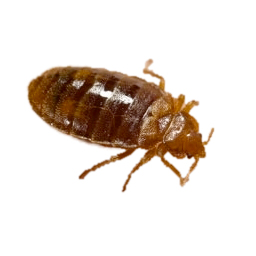The Bed Bug
The bed bug (Cimex lectularius) is the most common “true bug,” and it’s very well suited to living with humans. It measures 5 to 8 mm when fully grown. It’s reddish-brown in colour and has a flat body, which allows the bed bug to infiltrate narrow spaces. The bed bug is a nocturnal insect, but in the case of a severe infestation, they can move around even during the day. They move slowly, which will allow an attentive observer to spot them.
The lifestyle of the bed bug
Habitat
The bed bug can be found everywhere. It takes shelter in sheets, mattresses, bed bases, headboards, the seams of clothing, suitcases, furniture, and even in the walls. It survives winter conditions without difficulty, even in unheated homes.
Diet
Bed bugs feed exclusively on human blood. They can live for over a year without food, but they feed every three to seven days in ideal conditions. They are attracted by human activity: vibrations, heat, odours, and carbon dioxide (CO2).
Reproduction
The bed bug’s reproductive capacity is impressive. A single female bed bug can cause an infestation.

The risks associated with bed bugs
Bed bugs can invade a suitcase placed on an infested mattress and quickly ruin your souvenirs. Noting their presence is one thing, but getting rid of them is another. The consequences of a bed bug infestation are numerous. Severe itching is the main symptom caused by the bed bug’s painless bites. Since the delay between the bite and the symptoms can be up to 10 days, you may not notice their presence right away. In the case of abundant bites, the bed bug could cause anemia. Since infestations are significant and it’s hard to get rid of them yourself, it’s important to do business quickly with an ExterminaPro specialist, who will help you with the extermination process.

